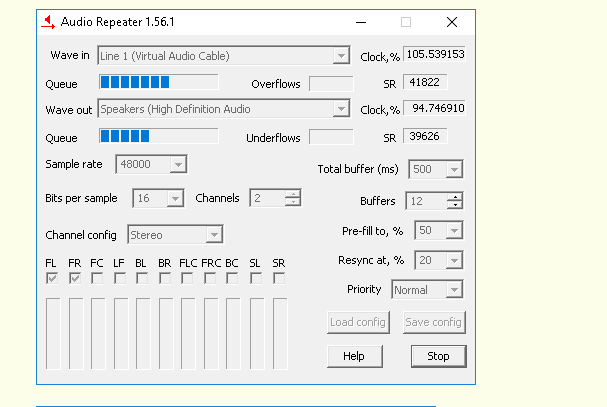
- #Virtual audio cable software free how to
- #Virtual audio cable software free driver
- #Virtual audio cable software free manual
You can download Virtual Audio Cable free here. Trial limitations: 3 cables, voice reminder. Virtual Audio Cable helps you connect Windows audio applications with virtual cables. Virtual Audio Cable works with 32- and 64-bit Windows editions.
#Virtual audio cable software free manual
The User Manual nicely explains what Virtual Audio Cable can do.
#Virtual audio cable software free how to
The ReadMe text file nicely explains how to get Virtual Audio Cable up and running. Transfer audio streams from one application to another with Virtual Audio Cable. The trial version comes with the following limitations: supports up to 3 cables adds female voice reminder each several seconds. It appears in your system as a new audio device (playback and recording.
#Virtual audio cable software free driver
Virtual Audio Cable is not free, it is commercial software. VB-CABLE is an easy to use audio device driver working as a Virtual Audio Cable. Thanks to its Multi-Format Audio Engine, VB-CABLE can be used without any configuration Ready to work with all Audio Applications using MME, KS, DX, WaveRT or WASAPI interfaces. The User Manual nicely explains what Virtual Audio Cable can do. VB-Audio CABLE is a Windows Audio Driver working as Virtual Audio Cable to connect two applications together (player to recorder). By donating any amount to the developer, you can unlock two more virtual audio devices, which is useful if you use multiple rtl-sdr dongles on one machine. VB-Cable does exactly the same job as Virtual Audio Cable but for free. It's easy to set up and use, so you can control your audio.

Download an archive and inside it you will find everything you need to get VAC up and running on a 32-bit PC or on a 64-bit PC. A free (donationware) alternative to Virtual Audio Cable that we recently found is VB-Cable. If you want full control of your audio in OBS, you need to learn how to use Virtual Audio Cables. Virtual Audio Cable works with 32- and 64-bit versions of Microsoft’s Windows operating system. I think it’s worth taking a look at what this software application can’t do, don’t you think? You cannot use VAC to render a MIDI sequence to an audio signal, you cannot use VAC to secretly intercept an audio signal unless a virtual cable is explicitly inserted into the signal path, you cannot use VAC to transfer audio data over a network. That pretty much takes care of what Virtual Audio Cable can do.

On top of connecting two or more applications, you can also use it to: intercept the digital audio signal from applications that are playing it record bitperfect digital audio data produced by applications that don’t create WAV files digitally mix several audio sources and route the resulting audio stream to a recording application share an audio stream convert audio data from one format to another and more. That’s not all that you can do with Virtual Audio Cable. Virtual Audio Cable (VAC for short) uses virtual cables to connect Windows audio applications. Why do I bring this up? Only to mention that Eugene Muzychenko took this concept and turned it virtual. To connect them, you need an analog or a digital cable.


 0 kommentar(er)
0 kommentar(er)
